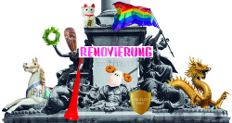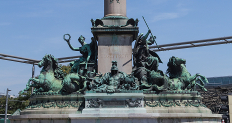Anka Leśniak
works
biography texts contact
2020
2019
2018
2017
2016
2015
2014
2013
2012
2011
2010
2009
2008
2007
2006
2004
WORKS 2016
Monument Renovation
billboard, Fluc, Wien
Transcultural Emancipation
billboards exhibition curated by Ursula Probst
the project completed during the residency
of KulturKontakt Artists-in-Residence Programm


The work refers to the surroundings of the Fluc, the Praterstern and its characteristic points as a monument of Wilhelm von Tegetthoff and the famous amusement park. The monument as many other such memorials commemorates a national hero, the admiral of the Austro-Hungarian Empire and his victory in the sea battle of Lissa (1866). The monument of Tagetthoff exists in the public space as a landmark, even if its meaning remains unknown to some people. It is located near a big railway station teeming with life, where we see the intersecting paths of locals and visitors, immigrants and tourists.






The aesthetics and themes of the monument show the values cultivated at the time of its construction, the period of imperialism, economic and cultural primacy of Europe and its military culture, based on patriarchal values. This 'consistent' image has already been challenged and 'infected' in many areas by various emancipation movements (the labour movement, feminism, LGBTI, subcultures). Currently, through the influx of immigrants from many parts of the world, European capitals have become more multicultural, where the strategy of mimicry is replaced by hybridization and fusion of different cultures and ways of life, this is already visible in public space.
By replacing the attributes of the figures from the monument, I would like to ask a question about the renegotiation of social values in Western culture. 'Alien' elements break the continuity and obvious narrative. Perhaps their presence reveals only a masquerade, a fake consistency of the patriarchal system based on exclusion and repression and centuries-old dominance of the Western world? Are representations of 'the Other' herald the end to European civilization or are they symptoms of its creative transformation?